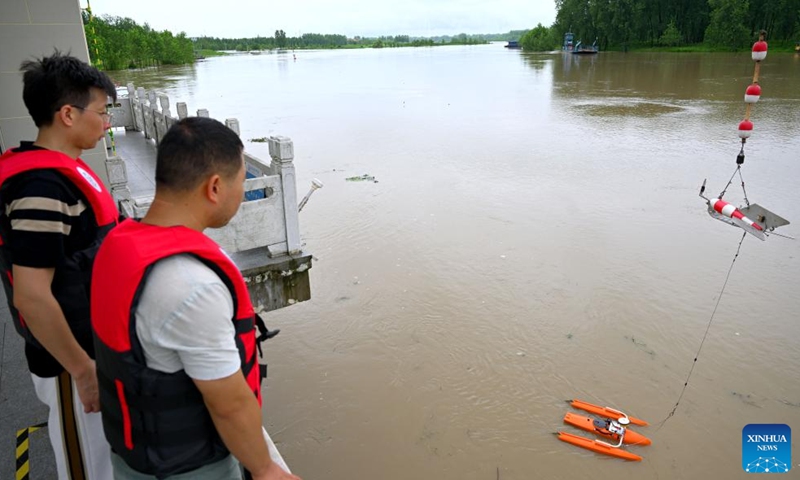As China approaches the critical flood control period from late July to early August, the Ministry of Water Resources is preparing to address the increasing frequency and intensity of river flooding caused by prolonged rain.
Between Saturday morning and Sunday morning, 31 rivers across the country, including in Chongqing Municipality, Hubei Province, and Jilin Province, exceeded warning levels. The Ministry of Water Resources has maintained a Level-III flood control emergency response in Anhui, Jiangxi, and Hunan provinces, and a Level-IV emergency response in Heilongjiang Province, Chongqing Municipality, and Sichuan Province.
A red alert for mountain floods was issued by the ministry and China Meteorological Administration, warning of high flood probabilities in Bazhong and Guangyuan in Sichuan between Sunday evening and Monday evening.
Major rivers and lakes in the Pearl River, Yangtze River, Taihu Lake, and Huaihe River basins have experienced 20 major floods since the start of the flood season. The second flood in Taihu Lake and the first flood in the Huaihe River are expanding, while the first and second floods in the Yangtze River basin continue. Emergency responses are underway for the Tuanzhou embankment in Huarong County, Hunan Province.
During the critical flood control period from July 16 to August 15, China will face concurrent droughts and floods, with more severe flooding expected. The Ministry of Water Resources emphasized the need for strengthened preventive measures, including forecasting, early warning, drills, and planning.
The ministry also stressed the importance of unified and coordinated management of water conservancy projects across river basins, focusing on reservoir safety, flood management in small- and medium-sized rivers, and mountain flood prevention.
Flood forecasts indicate potential floods in the seven major river basins, with more rainfall expected in northern areas and less in southern areas. Small- and medium-sized reservoirs face high safety risks due to low flood control capacity and problematic dams.
China’s State Flood Control and Drought Relief Headquarters and the Ministry of Emergency Management organized a joint consultation meeting, dispatching work teams to 15 provinces via video. They urged local departments to strengthen dike patrols, floodwater drainage, and to properly resettle affected residents while speeding up recovery and reconstruction efforts.
Since July 8, prolonged downpours have impacted multiple areas, including the Yangtze River basin, Sichuan Province, Chongqing Municipality, and the Three Gorges Reservoir area. The Three Gorges Dam opened its sluice gates for the first time this year on July 10 to discharge floodwater.
In Neijiang city, Sichuan, over 8,000 residents were relocated due to the floods, with the emergency response level raised to Level-III. In Chongqing, heavy rains affected 28 districts, causing water levels in six rivers to exceed warning levels and resulting in the relocation of 12,857 residents from 5,251 households.
The Taihu Lake basin experienced its second flood of the year, and the Huaihe River basin its first. The Ministry of Water Resources has maintained a Level-IV emergency response for flood control in Jiangsu Province, optimizing drainage plans and directing increased drainage efforts. A Level-III emergency response remains in place for Anhui Province, with a work group dispatched to assist in flood control.
In addition to patrolling dikes and draining floodwaters, local authorities are focused on resettling residents and expediting recovery and reconstruction efforts in affected areas.

